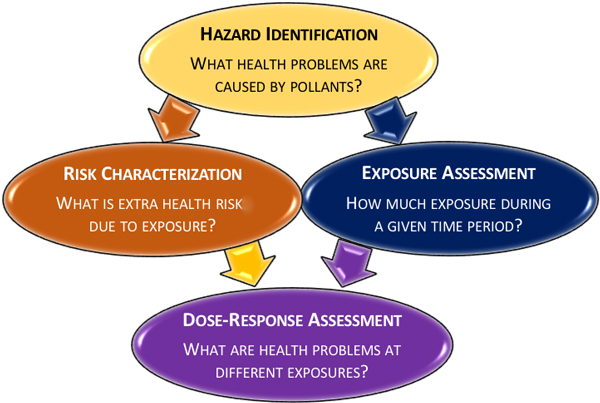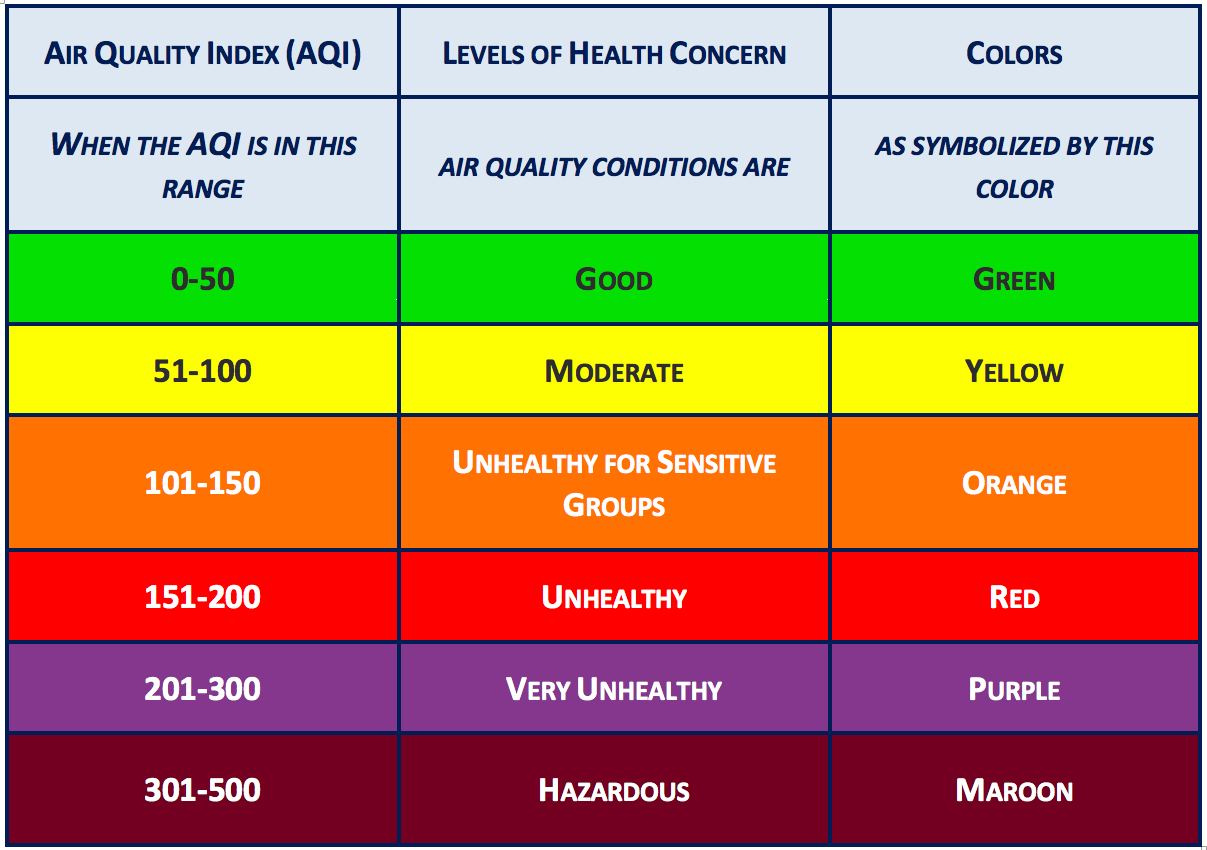The desolation of smog
I was born and grew up in Los Angeles.
In 2017, L.A. ranked No. 1 out of 228 U.S. metropolitan areas for high ozone days. It was much worse when I lived there in the 1950s and 1960s. I remember being told what seemed like once per week during morning homeroom in Le Conte Junior High that all school activities were canceled due to a High Smog Alert. It was unsafe to play outdoors, our teachers said. This became increasingly common as I advanced to Hollywood High School and California State University-Northridge.
My air-quality environment was better when I attended graduate school at the University of California-Berkeley and one year as an assistant professor at UC-Santa Barbara. Naturally, I was excited to come to Ann Arbor in 1972 where I imagined that air pollution would be a thing of the past. And it was, for a while. So, it’s disturbing to now learn that we have a pollution problem here in Tree Town!
The most recent evidence from the American Lung Association’s 2017 State of the Air report indicates the Detroit-Warren-Ann Arbor area ranked 35th out of 228 metropolitan areas for high ozone days; 42nd out of 186 metropolitan areas for 24-hour particle pollution; and 18th out of 184 metropolitan areas for annual particle pollution. OUCH!
Environmental pollution
Pollution represents the introduction of contaminants into the environment that cause harm or discomfort to humans or other living organisms, or that damage the environment. Contaminants (pollutants) can occur naturally or artificially and can come in many forms, i.e., chemical substances or energy, such as noise, heat, or light.
Persistent pollution takes place when the natural environment cannotprocess and neutralize different pollutants. These pollutants can stay in the ecosphere for many years, and subsequently can harm or destroy animal and plant life.
Although pollution has been known to exist at least since the introduction of fire thousands of years ago, it has grown to truly global proportions only since the onset of the Industrial Revolution during the 19th century. It represents a problem both in developed and developing countries and is increasing at unimaginable rates.
Biodegradable and nonbiodegradable pollutants
Biodegradable pollutants can be broken down and processed by living organisms. They are mostly temporary nuisances that can be neutralized and converted into harmless compounds. These include organic waste products, phosphates, and inorganic salts.
Nonbiodegradable pollutants cannot be decomposed by living organisms and persist in the ecosphere for long time periods. These pollutants include plastics, metal, glass, some pesticides and herbicides, and radioactive isotopes.
Types of environmental pollution
There are many different types of environmental pollutants, but the most important ones include air, water, and soil pollution.
| Major Types of Environmental Pollution | |
|---|---|
| Air Pollution | Includes sulfur dioxide, nitrogen dioxide, carbon monoxide, ozone, volatile organic compounds (VOCs), and airborne particles, including radioactive pollutants (specifically when produced by nuclear explosions). |
| Water Pollution | Includes insecticides and herbicides, food processing waste, pollutants from livestock operations, volatile organic compounds (VOCs), heavy metals, and chemical waste. |
| Soil Pollution (Contamination) | Includes hydrocarbons, solvents, and heavy metals. |
Major sources of environmental pollution
Fossil fuel (oil, gas, coal) pollutants are everywhere and represent the most serious source of nonbiodegradable environmental pollution. Automobile gas is the most obvious everyday fossil fuel, but fossil fuels are also used in the power-generating industry. They also are present in plastics, solvents, detergents, asphalt, lubricating oils, and a wide range of chemicals for industrial use.
Combustion of fossil fuels produces extremely high levels of air pollution and also contributes to soil contamination and water pollution. When oil is transported via pipeline, potential leaks threaten soil and groundwater. When transported by tankers or mined in the ocean, spills can wreak unimaginable damage to the ecosystem (i.e., the Deepwater Horizon oil catastrophe in the Gulf of Mexico, 2010).
Non-fossil fuel sources of environmental pollution
Among other pollution sources, livestock farming is worth mentioning since it is the largest generator of ammonia emissions. For more information about pollution and agriculture see my previous Health Yourself discussion titled “Buyer Beware.” Pesticides and fertilizers, widely used in agriculture, often lead to water pollution and soil contamination.
The residential sector represents a growing and significant source of environmental pollution generating solid municipal waste that may end up in landfills or incinerators leading to soil contamination and air pollution.
Overall health risks from pollution
Health risks define as a measure of the chance anyone will experience health problems due to pollutant exposure. For example, if you live near a factory that releases cancer-causing chemicals and inhale contaminated air, your risk of getting cancer increases relative to non-exposure. Breathing toxic air also could increase your risk of non-cancer effects such as emphysema or reproductive disorders. In both examples, exposure to toxic air pollutants increases your health risk.
A common risk assessment includes the following four processes.
Risk assessment is one tool used by scientists to estimate the increased risk of health problems due to pollutant exposure. A risk assessment for a toxic air pollutant, for example, combines results of studies on the health effects of various animal and human exposure to a given pollutant with an estimate of the level of exposure at different distances from the pollutant source. While risk assessments are far from perfect, they do help scientists evaluate the dangers associated with different pollutants.
Who is most susceptible?
People who are most at risk for severe health problems may experience impacts at low levels of exposure; impacts may vary in intensity. The most vulnerable include:
- People with heart disease, coronary artery disease, or congestive heart failure
- People with lung diseases, such as asthma, emphysema, or chronic obstructive pulmonary disease (COPD)
- Pregnant women
- Outdoor workers
- Older adults and the elderly
- Children younger than age 14
Air pollution, climate change, and health
While climate change is a global phenomenon, its local impacts can profoundly affect air quality. Increasing temperatures directly link to poor air quality — particularly increases in particulate matter, a complex mixture that may contain soot, smoke, metals, nitrates, sulfates, dust, water, and tire rubber — and can be directly emitted, as in smoke from a fire, or it can form in the atmosphere from reactions of such gases as nitrogen oxides.
Over the past 30 years, researchers have unearthed a wide array of health effects associated with air-pollution exposure. The World Health Organization estimates that in 2012 alone, some 72 percent of outdoor air pollution-related premature deaths were due to ischaemic heart disease and strokes, while 14 percent of deaths were due to chronic obstructive pulmonary disease or acute lower respiratory infections. Some 14 percent of deaths were due to lung cancer.
Some adverse effects may be attributed to more than one risk factor at the same time – for example, both smoking and ambient air pollution affect lung cancer. Some lung cancer deaths could be averted by improving ambient air quality, or by reducing tobacco smoking.
Health problems of long-term exposure to particulate pollution include:
- Increased respiratory symptoms – airway irritation, coughing, or difficulty breathing
- Decreased lung function
- Aggravated asthma
- Development of chronic respiratory disease in children
- Development of chronic bronchitis or chronic obstructive lung disease
- Irregular heartbeat
- Nonfatal heart attacks
- Premature death in people with heart or lung disease, including death from lung cancer
Health problems of short-term exposure to particulate pollution include:
- Aggravated lung disease causing asthma attacks and acute bronchitis
- Increased susceptibility to respiratory infections
- Possible heart attacks and arrhythmias in people with heart disease
Healthy people may experience some of these temporary symptoms:
- Irritation of the eyes, nose, and throat
- Coughing
- Chest tightness
- Shortness of breath
How to reduce air pollution
Most sources of outdoor air pollution are well beyond the control of individuals. They demand action by city officials, as well as by national and international policymakers. We can influence air-pollution policies by becoming informed about the facts of pollution, by calling our elected officials to take pollution seriously, and by voting for officials who support regulations to reduce introduction of pollutants into our environment. Moreover, outdoor air-pollution exposure can be reduced by checking the local Air Quality Index, avoiding heavy traffic when possible, and avoiding secondhand tobacco smoke.
We can reduce indoor air pollution by making sure the buildings we live and work in are well-ventilated and cleaned regularly to prevent the buildup of dust and mold. We all would be wise to remove known pollutants and or irritants (aerosols, stringent cleaning supplies, etc.) whenever possible.
References
- Air pollution and heart disease fact sheet
- Bai, L., et al. “Exposure to traffic-related air pollution and acute bronchitis in children: season and age as modifiers.” Journal of Epidemiol Community Health, 2018 Feb. 9. pii: jech-2017-209948. doi: 10.1136/jech-2017-209948. [Epub ahead of print.]
- Baumgartner, J., et al. “Household air pollution and measures of blood pressure, arterial stiffness, and central hemodynamics.” Heart, 2018 Feb. 9. pii: heartjnl-2017-312595. doi: 10.1136/heartjnl-2017-312595. [Epub ahead of print.]
- Falzon, L.C. “Quantitative outcomes of a one health approach to study global health challenges.” Ecohealth, 2018 Jan. 12. doi: 10.1007/s10393-017-1310-5. [Epub ahead of print.]
- Hadley, M.B., et al. “Developing a clinical approach to air pollution and cardiovascular health.” Circulation, 2018; 137(7):725.
- Mobile source pollution and health-related effects
- Kinney, P.L. “Interactions of climate change, air pollution, and human health.” Current Environmental Health Reports, 2018 Feb. 7. doi: 10.1007/s40572-018-0188-x. [Epub ahead of print].
- Min, J.Y., et al. “Long-term exposure to air pollution and the risk of suicide death: A population-based cohort study.” Science of the Total Environment, 2018; 628-629:573.
- Risk assessment for toxic air pollutants: A citizens’ guide
- Salameh, P., et al. “Hypertension prevalence and living conditions related to air pollution: Results of a national epidemiological study in Lebanon.” Environmental Science and Pollution Research 2018 Feb. 13. doi: 10.1007/s11356-018-1411-x. [Epub ahead of print]
- “‘State of the Air’ report finds continued improvement in air quality, yet increase in life-threatening spikes of particle pollution.”







Susan Steelmon - 2015
Are there any clean air petitions currently circulating ? If so who might be contacted that I might get in board and recieve further info ?
Thank you
Reply